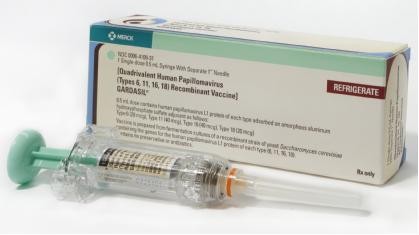
Top Stories
CMS Implements New Marketing, Education Requirements For PFFS Plans
Abby L. Block Director of the Centers for Medicare and Medicaid Services’ (CMS’) Center for Beneficiary Choices sent a memo May 29 to Medicare Advantage (MA) Private fee-for-service (PFFS) plans reminding them that CMS is requiring new outreach processes to ensure beneficiaries and providers are informed about the distinctive features of Medicare PFFS plans. Full StoryBaucus, Grassley Urge IRS To Update Reporting Forms For Nonprofits
Senate Finance Committee Chairman Max Baucus (D-MT) and Ranking Member Charles Grassley (R-IA) sent a letter May 25 to Treasury Secretary Henry Paulson urging him to update Form 990 and Form 990 PF that nonprofits file with the Internal Revenue Service (IRS) in order to gain greater transparency into the workings of tax-exempt organizations including charities. Full StoryArticles & Analyses
- Unionized Hospital Denied Antitrust Exemption In Nurses’ Suit, by Mark A. Hutcheson, Douglas C. Ross, Mary E. Drobka, and Charles S. Wright, Davis Wright Tremaine, LLP
Current Topics
- Criminal Law
D.C. Circuit Upholds Restitution Order Against Podiatrist Who Pled Guilty To Medicare Fraud- Fraud and Abuse
Sixteen Individuals Charged With Defrauding Medicare Of $101 Million In DME Billing Scheme- Update
- Healthcare Access
California Appeals Court Voids County’s Income Eligibility Cap For Subsistence Medical Care- Hospitals and Health Systems
1. Florida High Court Finds Hospital Has No Duty To Ensure Staff Physicians Have Malpractice Insurance
2. Florida Appeals Court Finds Hospital Owed No Duty of Care To Man Who Fainted After Viewing His Wife’s Emergency Treatment- Individual/Patient Rights
Second Circuit Finds Intended Organ Recipient Had No Property Right In Donated Kidney Because Of Incompatibility- Long Term Care
House Panel Investigating Deceptive Practices In Long Term Care Insurance Market- Medicaid
1. President Signs Supplemental War Spending Bill With SCHIP Funding And Moratorium On Medicaid Rule
2. CMS Issues Final Rule On State Medicaid Financing Arrangements
3. Ninth Circuit Upholds Oregon Plan Charging Individuals In Medicaid Expansion Group Higher Copays Than Other Medicaid Recipients- Medicare
1. CMS Proposes Non-Coverage Of LADR For Medicare Recipients Over 60
2. CMS Releases Measures For Evaluating Financial Health Of Suppliers Participating In New DMEPOS Competitive Bidding Program
3. CMS Clarifies Policy Relating To Part D Special Transition Period For Retroactive Enrollment
4. GAO Finds Most Employers Continued Retiree Drug Coverage, Opted For
Subsidy- News in Brief
1. PhRMA Adds Drug Safety Information To Its Website
2. AHRQ Adds New Web Tool For Healthcare Quality Report Cards- Patient Safety
Baucus,Grassley Introduce Bill Directed At Improving Research On Pharmaceutical Safety And Effectiveness- Physicians
1. Tennessee High Court Holds Information Otherwise Available From Original Sources Is Discoverable But Not From Peer Review Committee
2. Ohio High Court Strikes Down Rule Barring Anesthesiologist Assistants From Performing Epidural And Spinal Procedures- Tax
Eleventh Circuit Holds Medical Residents May Qualify For FICA Exemption



























